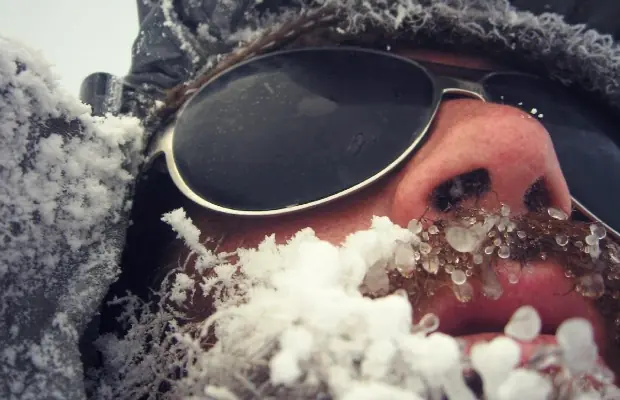
Winter adventurers find many rewards in winter explorations like fluffy white trails and a wide-open wilderness. There are also not-so-welcome reminders of the cold waiting to leave their mark.
Frostbite is a potentially dangerous condition that can affect you on the trail or at the campsite. So cover up, and learn how to recognize and treat it before your next winter trip.
The Science
Frostbite is damage to body tissue from exposure to extremely cold temperatures. When your skin is unprotected from the cold weather for a long period of time, blood moves from that area of the body to protect critical organs. You begin to see signs of frostbite after this happens.
Undeniable Signs
As a winter hiker, you may have seen it before. If you haven't, it's not surprising; the signs are subtle and can be easily overlooked. So, how do you know if you or your fellow traveler has frostbite? Pay close attention to the following on a winter hike or camping trip:
- How You Feel: The affected area will have the pins-and-needles feeling and numbness. It may also ache or throb.- How it Looks: The frostbitten patch will be hard and pale, and may have blisters.
- What Happens in Warm Weather: When the skin warms, the area will be red and extremely painful.
The most commonly affected areas include the nose, fingers and toes. The best way to prevent frostbite in the first place is to cover yourself completely, especially these vulnerable spots.
Treat It
If you or your travel partner gets frostbite, it's important that you treat it right away. If left uncared for, frostbite can lead to tendon, nerve and bone or muscle damage, and any blood vessel damage is permanent. Take the following steps when you first see the signs.
1. Get to a warm place. If you're on the trail, stop to make camp, start a fire, and warm the infected area.2. Check for signs of hypothermia, which is closely associated with frostbite. The most prominent sign will be a very low body temperature.
3. If the area is already blistering or black, wrap it in sterile gauze and find an emergency room right away. If not, rewarm the area with warm water—not hot. Another option is to reapply warm clothes in the affected every area 20 to 30 minutes. If it's on the hand, for example, change into new warm gloves every half hour. Only stop this process when the affected area softens and sensation returns.
4. Apply dry, sterile gauze, remembering to wrap fingers and toes separately if the frostbite is in that area.
Severe damage can occur if the area gets cold or freezes again, so apply plenty of gauze and keep it out of direct contact with the cold. Continue reapplying new clothing every half hour if you're staying outside. As always, the best treatment for frostbite is prevention. Cover up, keep warm, and don't ignore the signs.
Related Articles:
 Book your next camping trip
Book your next camping trip



